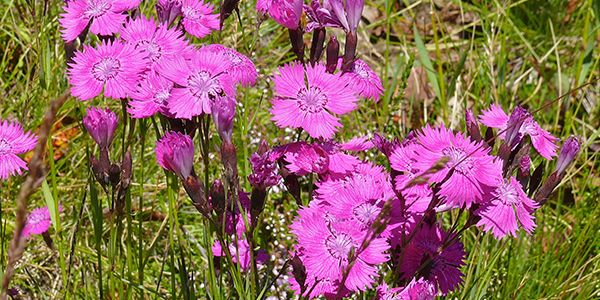Pink Dianthus price

Where to buy and sell Pink Dianthus, lowest (cheapest) and highest price.
check offers buy sell Pink DianthusToday price for Pink DianthusPink Dianthus wholesale prices 2022
The Current commodity price of Pink Dianthus per kg, pound in the world in the global markets
dianthus (clavellina)
Price range: 1 - 1 EUR / 1 kg | Market: Mercados de Abastecimientos de Barcelona SA | Date: 2022-06-12
dianthus (clavellina)
Price range: 1 - 1 EUR / 1 kg | Market: Mercados de Abastecimientos de Barcelona SA | Date: 2022-06-05
dianthus (clavellina)
Price range: 1 - 1 EUR / 1 kg | Market: Mercados de Abastecimientos de Barcelona SA | Date: 2022-05-29
dianthus (clavellina)
Price range: 1 - 1 EUR / 1 kg | Market: Mercados de Abastecimientos de Barcelona SA | Date: 2022-05-22
dianthus (clavellina)
Price range: 1 - 1 EUR / 1 kg | Market: Mercados de Abastecimientos de Barcelona SA | Date: 2022-05-15
dianthus (clavellina)
Price range: 1 - 1 EUR / 1 kg | Market: Mercados de Abastecimientos de Barcelona SA | Date: 2022-05-08
dianthus (clavellina)
Price range: 1 - 1 EUR / 1 kg | Market: Mercados de Abastecimientos de Barcelona SA | Date: 2022-05-01
Pink Dianthus
The Dianthus plant is a member of the Caryophyllaceae family. It is an herbaceous perennial that is native to Europe and Asia. The plant has a clump-forming growth habit and reaches a height of 30 cm (12 in). The leaves are blue-green in color and the flowers are pink or white. The blooms appear in summer and last for about two weeks. The plant is drought tolerant and does not require much care. It can be propagated by seed or division. The Dianthus plant is a popular choice for gardens because of its colorful flowers. It is also a favorite of florists because the blooms make good-cut flowers. The plant is relatively easy to care for and is drought tolerant. It can be propagated by seed or division. The pink (dianthus) is a flowering plant that belongs to the family Caryophyllaceae. It is native to Europe and Asia, but it has been introduced to other parts of the world, including North America. The pink grows in a variety of habitats, from alpine meadows to grasslands. It typically blooms in the summertime, but some species may bloom in the spring or fall. Pink is a popular garden plant, and it is also used as a cut flower. The flowers of the pink are typically white or pink, but they can also be red, purple, or yellow. The plants range in size from a few inches to several feet tall. Pink has a long history of cultivation, and it has been used in traditional medicine for centuries. Today, pink is grown for its ornamental value, and it is also used as an ingredient in perfumes and cosmetics. Dianthus is a genus of around 300 species of flowering plants in the family Caryophyllaceae, native mainly to Europe and Asia. The name derives from the Greek words for "heaven" (διός dios) and "flower" (ἀνθός anthos). Common names include carnation (D. caryophyllus), pink (D. plumarius and related species) and sweet william (D. barbatus). The leaves are opposite, simple, mostly linear, and often heavily rolled under at the edges. The flowers have five petals, typically with a frilled or serrated edge, and are pale to dark pink. Flowering occurs mostly in spring and summer, although some species (such as D. caryophyllus) flower more evenly throughout the year. The fruit is a capsule containing numerous small seeds. The genus is distributed throughout the temperate regions of the world, with the greatest number of species in Asia. Dianthus species are used as food plants by the larvae of some Lepidoptera species including the Cabbage Moth, Grapevine Moth, Large Yellow Underwing, Small Angle Shades, and Turnip Moth.Global pink (dianthus) production
In 2018, the global production of pink (dianthus) is estimated to be around 1.3 million tonnes. The top-producing countries are: 1. China - 400,000 tonnes2. India - 200,000 tonnes
3. United States - 150,000 tonnes
4. Turkey - 120,000 tonnes
5. Egypt - 100,000 tonnes
The majority of pink (dianthus) production is for the cut flower market. Pink (dianthus) is a popular choice for bouquets and other floral arrangements because of its showy flowers and sweet fragrance. The oil extracted from pink (dianthus) flowers is also used in perfumes and other fragranced products. Pink (dianthus) is a hardy plant that can be grown in a variety of climates. It prefers well-drained soils and full sun but can tolerate some shade. Pink (dianthus) is relatively drought-tolerant and does not require a lot of fertilizer. Pests and diseases are not a major problem for pink (dianthus). However, the plants can be susceptible to powdery mildew and root rot if they are grown in poorly-drained soils. Regular scouting and prompt removal of affected plants is the best way to prevent these problems.
Download our new
Husfarm App
Stay up to date with the current prieces of agricultural products all over the world.
Do you want to sell agricultural products?
Are you an Agricultural processor looking for high-quality products to buy?
Post an ad for FREE!
